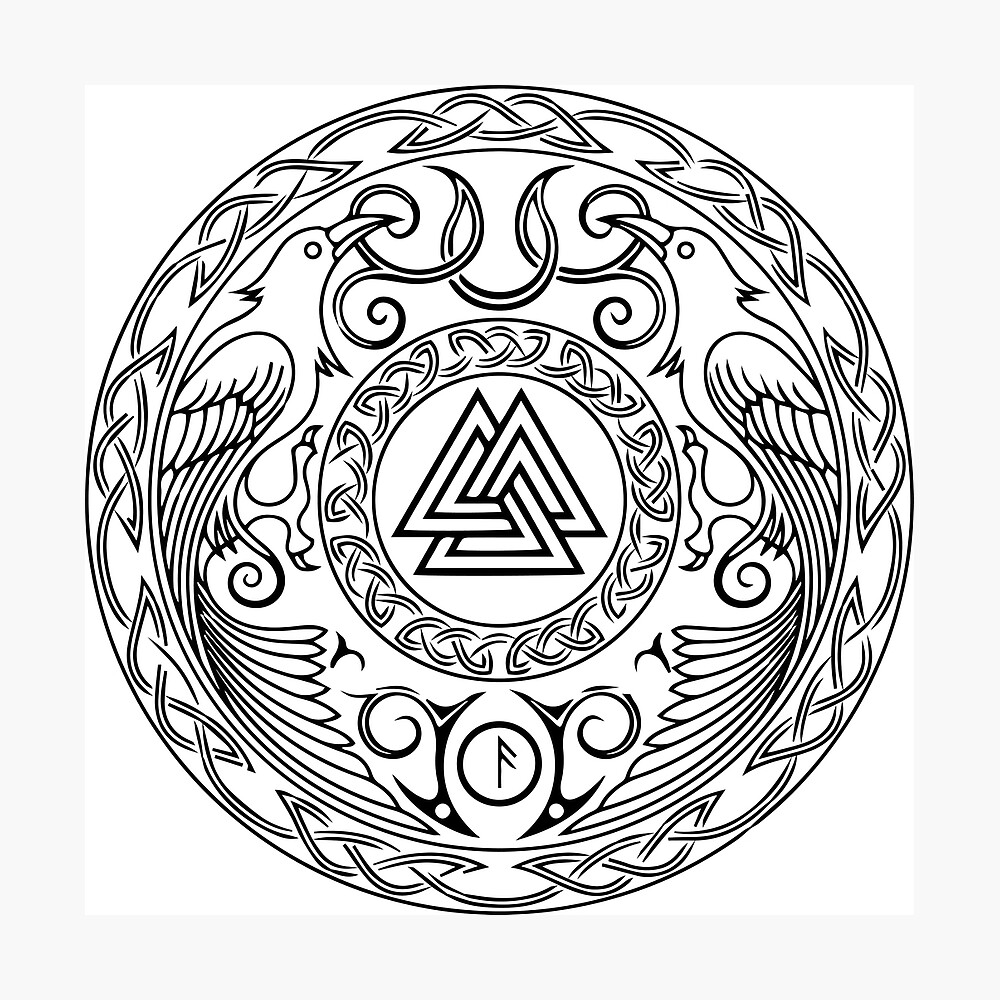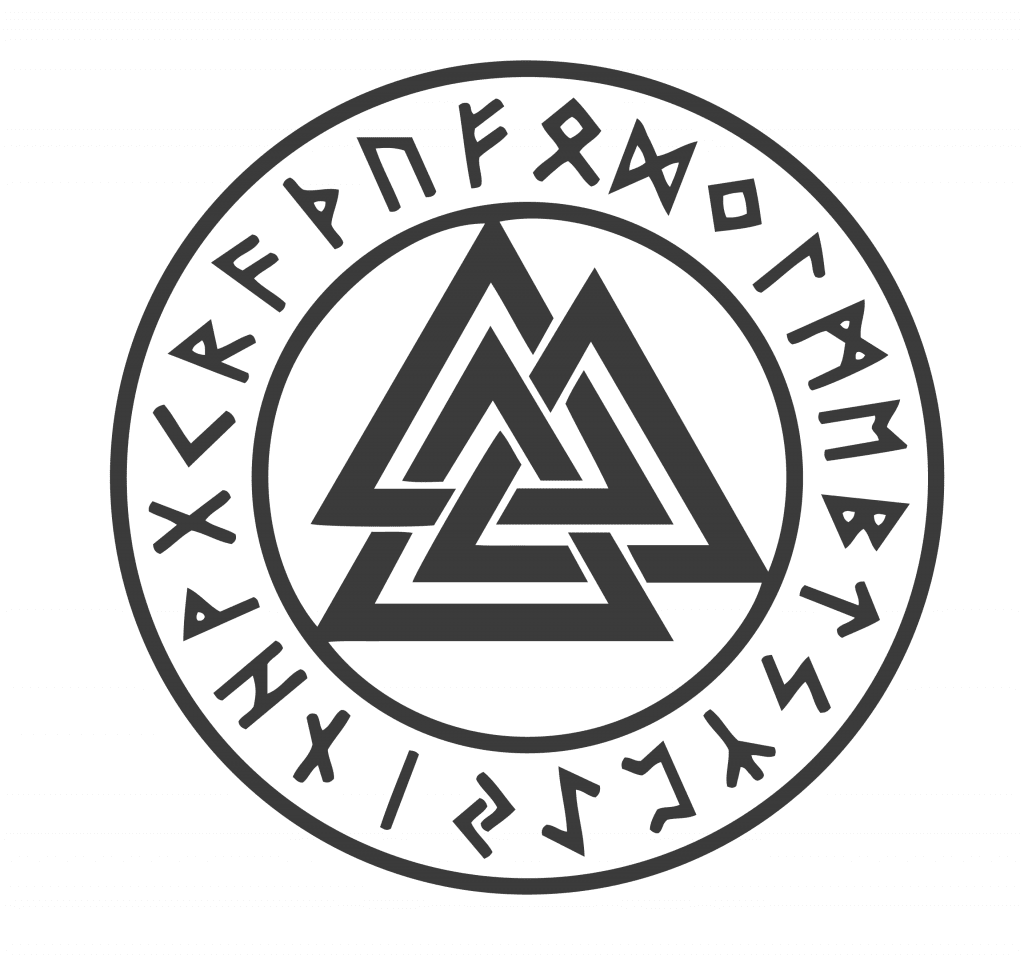
175 best images about Celtic / Norse tattoos on Pinterest
Viking knotwork, also known as interlace, is a style of decorative art that originated in the early medieval period. It is believed to have been inspired by the intricate knotwork designs found in Celtic art, which the Vikings encountered during their raids and travels. The Vikings quickly adopted this style and incorporated it into their own art.

norse knots Google Search Норвежские символы, Кельтские символы
Norse Vikings made use of imagery and symbols to a great extent in their daily lives. They decorated the walls of their homes with these and their armor, weapons and clothing all featured beautiful and unique designs and imagery such as Viking knots. Here is all our articles on those designs and their meanings.

Repost of some concept knotwork art....would love to make this as a
12 Fascinating Viking Symbols/Norse Symbols and Their Meanings Symbols played an important role in the Viking culture. From merely representing their faith, to calling on their gods for protection or instilling fear in their enemies, the Norse people used various symbols for different purposes. But how well do we know these symbols?

Похожее изображение Viking knotwork, Norse tattoo, Pattern tattoo
Valknut variations. On the left unicursal trefoil forms; on the right tricursal linked triangle forms.. The valknut is a symbol consisting of three interlocked triangles.It appears on a variety of objects from the archaeological record of the ancient Germanic peoples.The term valknut is a modern development; it is not known what term or terms were used to refer to the symbol historically.

17 Best images about Norse knotwork on Pinterest Norse mythology
Norse-Viking Symbols & Meanings Article by Joshua J. Mark published on 10 January 2019 Listen to this article Available in other languages: French, Spanish A symbol is an image or object which represents an abstract concept, often having to do with one's religious beliefs.

Stands Tall Creations Woodcarving Studio and Gallery Viking ornament
And was it really used by the Vikings? Let's delve into the mysterious origins and meanings of the Valknútr and explore its place in Norse mythology, as well as its links to other symbols and enduring legacy in our modern world. Key Takeaways The name "Valknut" wasn't used until the 20th century, and we do not know what it was called before then.

142 best images about Norse Art on Pinterest Viking dragon, Church
The Viking culture, or Norse culture, was diverse and not solely designated to pillaging and raiding. They were also farmers and traders with skills in blacksmithing, weaving, carpentry, music, crafts, and more. The Viking longships also became one of their most innovative constructions, used to navigate the seas and take them to distant lands.

Norse Mythology Mythology art, Norse mythology, Celtic artwork
The term valknut is a modern Norwegian compound word meaning "knot of those fallen in battle," referring partly to the theory that the symbol was associated with death. Similar emblems appear on several Anglo-Saxon cremation urns. Moreover, the valknut is said to often accompany symbols and possibly depictions of the god Odin, whose roles in Norse mythology include ferrying the dead to the.

"Norse knotwork" Photographic Print by handcraftline Redbubble
The History In terms of history, the Celts can claim they had the idea first. The oldest knotwork in that region of the world comes to us thanks to the ancient druids. Judging by the spirals in places like Newgrange outside of Dublin, they may even have their roots in Neolithic times.

Valknut, The Symbol of Odin and Its Meaning in Norse Mythology
Carved onto this monumental artifact are various scenes from Norse mythology, including a prominent representation of Yggdrasil. 6. Triquetra (Celtic Knot) The Triquetra, also known as the Celtic Knot, is a symbol that originated in Celtic culture but has also been adopted and used by Vikings.

Ragnar's Raven by RAIDHO Нордические татуировки, Символы викингов
The Three Classes of Society The End of the Worlds - Ragnarok Deciphering the Valknut, the Symbol of Odin For a symbol that seems to have held such great importance and was associated with the chief god of the Norsemen, disproportionately little is known about its exact meanings and uses.

Viking Knotworks I (Basics IV) Viking knotwork, Celtic knot tutorial
Viking Axe. Triquetra, The Celtic Knot. Sleipnir, 8-Legged Horse of Odin. 1. Valknut, The Viking symbol of Odin. We start our overview of Viking symbols with the Valknut! Representing 3 intertwined triangles, associated with the God Odin, Valknut is a symbol of fallen knots, or even of warriors killed in combat.

Norse Mythology Viking Knotwork lisa Pinterest Viking knotwork
The Valknut is a recognizable yet somewhat enigmatic symbol. This ancient Norse and Germanic sign goes so far back that archeologists and historians don't even know its original name, as Valknut is a modern name that was given to it recently. It's a compound word in modern Norwegian that means knot of those fallen in battle from the words varlor slain warrior and knut meaning knot.

norse knots Google Search design Pinterest Tattoo
The origins of Norse knotwork can be traced back to the Viking Age, which lasted from the late 8th century to the mid-11th century. During this time, the Norse people were known for their skilled craftsmanship and artistry, and knotwork was a popular decorative element in their creations.

norse ornament Поиск в Google Viking pattern, Viking art, Viking
McCoy, D. The Viking Spirit: An Introduction to Norse Mythology and Religion. Columbia. 2016; McCoy, D. Norse Mythology for Smart People. Norse Mythology Accessed January 9, 2018. Norse-mythology.org; Zolfagharifard, E. Hammer of Thor' unearthed: Runes on 1,000-year-old amulet solve mystery of why Viking charms were worn for protection. Daily Mail.

The Anatomy of Viking Art Borre Style (850 950) Viking art
The short answer is that we don't know. The longer answer is: The Valknut on the Stora Hammars I stone, Gotland, Sweden In the archaeological record, the Valknut appears only in connection with the cult of the dead, as in the aforementioned runestones and ship burial.